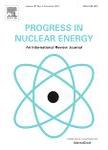版权所有:内蒙古大学图书馆 技术提供:维普资讯• 智图
内蒙古自治区呼和浩特市赛罕区大学西街235号 邮编: 010021

作者机构:South China Univ Technol Sch Elect Power Engn Guangzhou 510641 Peoples R China
出 版 物:《PROGRESS IN NUCLEAR ENERGY》 (Prog. Nucl. Energy)
年 卷 期:2025年第180卷
核心收录:
学科分类:08[工学] 0827[工学-核科学与技术]
基 金:Guangdong Basic and Applied Basic Research Foundation, China [2022A1515010217] Fundamental Research Funds for the Central Universities
主 题:Double-acting Free piston stirling engine Design and optimization Deep-sea nuclear power
摘 要:Given the increasing demand for deep-sea exploration, nuclear power system is attracting great interest for electricity supply due to its long-time operation with one refuelling. Double-acting free piston Stirling engine (DAFPSE) is a promising energy conversion system for nuclear power considering its long operation life, low vibration and little maintenance. However, the research on the DAFPSE design and optimization for deep-sea nuclear power system is scarce, which requires high volumetric power density. In this study, a practical isothermal model for designing multi-cylinder DAFPSE was established with the validation against the experiment. Also, the influences of structure parameters, operating parameters and heat exchanger parameters on the DAFPSE performance were investigated. The results indicated that the maximum deviation between the calculation and the experimental result was 8.75%. The compression ratio had significant influence on power density but less influence on efficiency. Specifically, the power density increased by 109.8% and the efficiency decreased by 11.7% respectively when the compression ratio changed from 1.5 to 2. As the engine frequency increased, power density first increased and then decreased, and the maximum power density of 10.71 MW m- 3 was obtained at the frequency of 21 Hz. With the increase of regenerator porosity, the engine efficiency and power density had similar change trends, which showed that the maximum efficiency of 36.6% and the maximum power density of 10.35 MW m-3 were achieved at the regenerator porosity of 0.8 and 0.9, respectively. The engine efficiency and power density had linear variations with both the hot end temperature and the inlet temperature of cooling water. After the sensitivity investigation of the design parameters, multi-objective optimizations were performed for the structures with different cylinders. The four-cylinder DAFPSE obtained better overall engine performance, in which the optimal scheme w